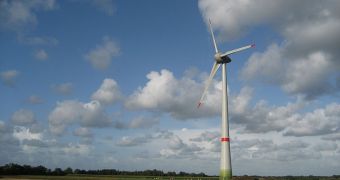A researcher from Case Western Reserve University thinks he has found a new key element aiming to revolutionize wind power industry. He has come up with a lighter, stronger turbine blade prototype.
Even though wind turbines provide an effective, safe method of producing clean energy, they have a few disadvantages that currently make them less competitive, Clean Technica reports.
One of their flaws is their weight. Therefore, the scientist's contribution is welcomed, since he has managed to design an innovative prototype of blades for wind turbines with lighter weight. Usually, it's a real challenge to manufacture such items with more than 200-feet in diameter, while expecting them to cope with powerful winds and still remain in one piece.
This is a natural response to inertia, the tendency of objects to fight a change of speed. In this process, the weight of blades is holding them back. Since these items are not very flexible, there can break and cause a lot of damage.
It is much more difficult to stop heavier objects and also much more difficult to make them move. The main goal of developers has always been a new prototype combining extra strength with low weight and the expert has managed to achieve just that.
He is behind the success of a series of 9-inch blades designed for a 400-watt turbine using polyurethane, a highly efficient polymer, and improved with carbon nanotubes.
At this point in time, the major players in this line of business are not ready yet to implement this prototype, since experts warn that its costs are prohibitive, mostly because carbon nanotubes are still very expensive.
All in all, the new generation of wind turbines is expected to function better and cope with extreme weather and other risk factors that threaten their balance. This series of improvements comes at the right time, when skeptics have new reasons to question the safety standards and reliability of renewables.
Developers hope that once the wind power industry will become more mature, the costs of these innovations will decrease, making the prototype implementable and economically feasible.

 14 DAY TRIAL //
14 DAY TRIAL //